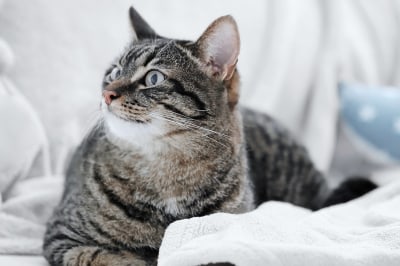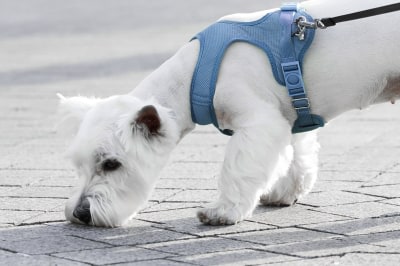CT scans, X-rays or other technologies are used if your pet is experiencing a known condition or certain symptoms in order to get a better look at their internal structures. Below, our Oklahoma City vets talk about what you can expect during your cat or dog's diagnostic imaging appointments and what x-rays, CT scans and more are used for.
CT Scans & X-Rays For Dog & Cats
Computed tomographic imaging, also known as a "CT" or "cat scan" for cats and dogs, creates multiple individual images or "slices'' of a body region of interest. Individual slices of bread that make up a complete loaf are a common analogy for a CT scanner image. Using this machine, your vet can take a series of 2D 'slices' of images and stitch them together to create a full 3D view of your cat's structures. This body reconstruction for your cat can be useful if you are planning surgery or other intensive treatment. The images are then sent to a veterinary specialist for review and interpretation.
An X-ray is a quick, painless test that produces images of the structures inside your cat and/or dog's body. Mainly your cat's and/or dog's bones. X-rays pass through the body, and they are absorbed in different volumes depending on the density of the material that they have to pass through.
What is the purpose of routine diagnostic imaging for dogs and cats?
X-rays are one of the most commonly used types of veterinary diagnostics which are able to help vets to get a view of your pet's bones, tissues, and internal organs so that they can diagnose issues such as broken bones, bladder stones, swallowing foreign objects, and more.
X-ray images can assist veterinarians in detecting tumors, pregnancy, and enlarged organs, which can lead to a diagnosis of heart disease or cancer. X-ray technology, on the other hand, cannot provide a detailed view of organs, tissues, and ligaments. Other diagnostic imaging, such as MRIs and ultrasounds, are more useful in these cases. An X-ray of a pregnant dog can also help you prepare for the birth of puppies by letting you know how many puppies your dog is expecting and whether a c-section is necessary for any reason.
The high-resolution images produced by the CT machine help us to evaluate your pet's anatomy in great detail - a detail that we would otherwise not be able to see using standard X-rays. CT scanners provide excellent detail of bony and soft tissue structures in the body.
Do you need to prepare for X-rays or cat scans for cats and dogs?
Often, an X-ray and CT scan will be done at the time of concern which means that you will not need to worry about preparing your pet for the visit.
If you have scheduled an X-ray or CT scan for your pet, your veterinarian will provide you with all of the information required to ensure that they get the clearest image possible.
Is my pet awake during diagnostic imaging?
Some pets may require sedation in order to be able to get a clear image, safely. If your pet is able to quietly and comfortably lay on the table to the imaging appointment then your vet may proceed without sedation.
Sedation, on the other hand, will be recommended if your dog or cat is squirmy, edgy, or in pain. Sedation may also be used during your pet's X-ray or scan if the dog's or cat's muscles need to be relaxed to obtain a clear image, or if the X-ray is being used on the skull, teeth, or spine.
A CT scan is a very safe procedure. Like an X-ray, CT scans use ionizing radiation, which is not harmful to pets at the low doses at which they are used.
Is routine diagnostic imaging for dogs and cats safe?
While X-rays and CT scanners are generally considered safe for dogs and cats, they do involve radiation. As a result, X-rays and CT scans are typically used as diagnostic tools only on occasion. In some cases, veterinarians will use X-ray technology to determine a dog's pregnancy. However, other types of imaging, such as ultrasounds, could be used in that situation.
You can reach out to your vet to express any possible concerns that you have about diagnostic imaging for cats and dogs. They will be able to give you an understanding of the risks versus the benefits in your dog's and cat's particular case.
What is the cost of CT scans or X-rays for cats and dogs?
The cost of your dog's or cat's X-rays will be determined by a variety of factors, including the size of your pet, the area being X-rayed, whether sedation was used, the type of clinic, where your veterinary clinic is located, and more. If you are concerned about the cost of your cat or dog's X-rays, consult with your veterinarian first.
The same thing typically goes for cat scans for cats and dogs. The cost will depend entirely on what exactly is done to your pet.
Note: The advice provided in this post is intended for informational purposes and does not constitute medical advice regarding pets. Please make an appointment with your vet for an accurate diagnosis of your pet's condition.



